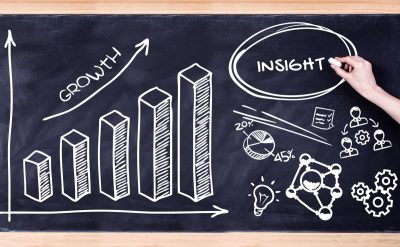Highlights:
- Data fabric is the new way of managing data – based on the idea that data growth and decentralization will continue!
- This means that the old way of collecting data through centrally managed repositories is doomed.
Today’s workplace has a knowledge gap; it’s the difference between the ‘data’ organizations have and the ‘insights’ they get from it. Different kinds of data architectures are used to solve this problem.
But the situation is more challenging because many legacy systems and processes are built to keep data separate or work with already separated data. The businesses today are looking for ways to make the information easier to find – because completely redoing these systems is too expensive, disruptive and time-consuming.
Data fabric is one way to solve this problem.
The core issue data fabric is meant to solve
As business leaders underline the value of robust data cultures and set their strategic compass around everything being data-driven, they are bound to face a harsh reality eventually – enterprise data environments aren’t up to the task!
More data in too many places creates roadblocks to significant data transformation. To get data out of a place like this, you need to know what you’re doing, and even then, you can’t trust its implementation.
Data fabric is a new way of managing data based on the idea that data growth and decentralization will continue, which means that the old way of collecting data through centrally managed repositories may be doomed in the near future. This is precisely what data fabric is made to fix!
Data fabrics use federated governance and AI to connect different data sources intelligently and amp; dynamically across an enterprise, index them and make them available for data analytics – as and when needed.
A data fabric works with existing architectures and is flexible enough to connect new data sources as they become available.
When paired with a robust data analytics platform, data fabric opens the possibility of self-service analytics. This allows anyone to use data with AI-powered predictions, what-if scenario planning, guided model building, insights and other data science techniques— all with clicks, not code.
The many benefits of data fabric
The main benefits of a data fabric are twofold: It makes it easier to get to data plus automates the different parts of managing data. Let’s look at how data fabric’s various advantages can be utilized for business.
-
When it’s easier to get to data, business users can do more at work:
Many companies now want to let business users’ access and use data without the direct help from IT support or data services. This speeds up the whole process and helps businesses drive faster decision-making.
The users can also access and combine data types from various sources because a data fabric can work across other sources and locations.
-
When inefficiencies are cut down, data performance and output go up:
Data fabric is not a product; it is a business approach! It works with all kinds of tools and environments so that data can be accessed and put together. It eliminates some of the problems that come up when delivering data.
-
Streamlining maintenance and automating routine work lowers costs:
A Gartner Report says that data fabric cuts the design and deployment of integration by 30% and maintenance by 70%. It can use data storage and amp; processing solutions already in place, while making room for new ideas. Data fabric can also make it easier to add new tools without having to do it manually. Both features lower costs and improves upon how well the data works. Also, about 45% of a data scientist’s time is spent alone on loading and cleaning data. By automating this task, they can get more done and use their skills to do more important business tasks.
-
Automation makes it easier to manage and process data:
Automation is used to find, track and use data while saving on the business expenses. More importantly, it makes it easier for an organization to implement policies for data governance. This is because data governance policies can be built into the data fabric. This makes it easier to believe that the data is accurate and gives more accurate results.
In conclusion
The layers of software that make up a data fabric depend a lot on the data fabric tools for storage and analysis – that are usually thought of separately. Many data storage systems use standard protocols, so the systems can work well when they do! But the data fabric can’t do much if the data is stored inappropriately or the storage systems aren’t working.
In general, data fabric packages collect the data and move it to the different software packages that can analyze it. The data fabric is not responsible if the data is unavailable or if the analysis is incorrect!











